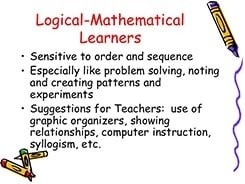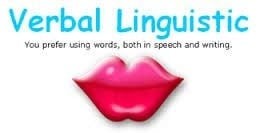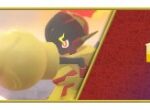How Do I Know My Learning Style? Understanding your individual learning style is the cornerstone of effective study habits and academic success. At LEARNS.EDU.VN, we provide resources to help you identify your preferred learning approach, whether it’s through visual aids, auditory cues, kinesthetic experiences, or logical reasoning, to tailor your learning journey for optimal results. Discover your learning preferences, study strategies, and personalized learning with us.
1. Why Should I Know My Learning Style?
Understanding your learning style unlocks a world of personalized learning strategies, leading to improved comprehension, retention, and overall academic performance. By tailoring your study methods to match your natural learning preferences, you can transform learning from a chore into an engaging and effective experience.
1.1. The Benefits of Identifying Your Learning Style
Knowing your learning style is like having a secret weapon in your educational arsenal. It empowers you to optimize your study habits, making learning more efficient, enjoyable, and ultimately, more successful. Here are some key benefits:
- Enhanced Comprehension: When you learn in a way that resonates with your natural preferences, complex concepts become easier to grasp.
- Improved Retention: Information is more likely to stick when it’s presented in a format that aligns with your learning style.
- Increased Engagement: Learning becomes more enjoyable when you’re actively engaged in the process, leading to greater motivation and a thirst for knowledge.
- Reduced Frustration: Tailoring your study methods to your learning style minimizes frustration and maximizes efficiency, saving you time and energy.
- Boosted Confidence: As you experience success with your tailored learning strategies, your confidence in your ability to learn and achieve grows.
- Personalized Learning: Understanding your learning style is the cornerstone of personalized learning, allowing you to take control of your educational journey and tailor it to your unique needs and preferences.
- Better Academic Performance: Ultimately, understanding and leveraging your learning style can lead to improved grades, higher test scores, and overall academic success.
LEARNS.EDU.VN offers a variety of resources to help you discover your learning style and develop personalized study strategies.
1.2. Debunking Myths About Learning Styles
While the concept of learning styles is widely popular, it’s important to address some common misconceptions. One of the biggest myths is that individuals learn exclusively through one style. In reality, most people utilize a combination of learning styles, with one or two being more dominant.
Another misconception is that learning styles are fixed and unchangeable. While your preferred learning style may remain consistent over time, you can also develop and adapt your strategies to suit different learning situations. According to research from the University of Cambridge, adopting a flexible approach to learning, incorporating various techniques, can significantly enhance overall learning outcomes.
Finally, it’s crucial to avoid pigeonholing yourself into a single learning style. While understanding your preferences is valuable, it’s equally important to explore and experiment with different approaches to find what works best for you in different contexts. At LEARNS.EDU.VN, we encourage a holistic approach to learning, embracing a variety of methods and strategies to maximize your potential.
2. What Are The Different Learning Styles?
Learning styles are various ways individuals process and retain information. Recognizing these different approaches can significantly improve your learning experience and academic performance. There are many models of learning styles, but here are some of the most common:
2.1. Visual Learners
Visual learners thrive when information is presented in a visual format. They respond well to diagrams, charts, graphs, videos, and other visual aids.
2.1.1. Characteristics of Visual Learners:
- Prefer to see information rather than hear it
- Learn best from diagrams, charts, and graphs
- Enjoy watching videos and presentations
- Often doodle or draw while listening
- Have a strong sense of color and design
2.1.2. Effective Study Strategies for Visual Learners:
- Create mind maps and visual summaries of notes
- Use color-coding to organize information
- Watch educational videos and documentaries
- Draw diagrams and illustrations to explain concepts
- Visit museums and art galleries to engage with visual content
2.2. Auditory Learners
Auditory learners learn best through listening and speaking. They benefit from lectures, discussions, audio recordings, and other auditory methods.
2.2.1. Characteristics of Auditory Learners:
- Prefer to hear information rather than read it
- Learn best from lectures and discussions
- Enjoy listening to audio recordings and podcasts
- Often talk to themselves while studying
- Have a good sense of rhythm and sound
2.2.2. Effective Study Strategies for Auditory Learners:
- Attend lectures and participate in discussions
- Record lectures and listen to them later
- Read notes aloud
- Study with a partner and discuss the material
- Use mnemonic devices and rhymes to remember information
2.3. Kinesthetic Learners
Kinesthetic learners learn best through hands-on activities and physical experiences. They benefit from experiments, projects, field trips, and other tactile methods.
2.3.1. Characteristics of Kinesthetic Learners:
- Prefer to learn through doing and experiencing
- Learn best from hands-on activities and experiments
- Enjoy building models and working with tools
- Often fidget or move around while studying
- Have a strong sense of touch and movement
2.3.2. Effective Study Strategies for Kinesthetic Learners:
- Engage in hands-on activities and experiments
- Build models and create physical representations of concepts
- Take frequent breaks to move around and stretch
- Use flashcards and other tactile study aids
- Visit museums and historical sites to experience learning firsthand
2.4. Reading/Writing Learners
Reading/writing learners excel when information is presented in written form. They prefer to learn through reading textbooks, taking notes, and writing essays.
2.4.1. Characteristics of Reading/Writing Learners:
- Prefer to learn through reading and writing
- Learn best from textbooks and written materials
- Enjoy taking notes and writing essays
- Often rewrite or summarize information to understand it better
- Have a strong command of language
2.4.2. Effective Study Strategies for Reading/Writing Learners:
- Read textbooks and other written materials carefully
- Take detailed notes during lectures and readings
- Summarize information in your own words
- Write essays and reports to demonstrate your understanding
- Use flashcards with written definitions and explanations
2.5. Logical Learners
Logical learners thrive when information is presented in a logical and structured manner. They prefer to learn through reasoning, problem-solving, and analytical thinking.
2.5.1. Characteristics of Logical Learners:
- Prefer to learn through reasoning and logic
- Learn best from structured and organized information
- Enjoy solving problems and puzzles
- Often look for patterns and connections
- Have a strong analytical mind
2.5.2. Effective Study Strategies for Logical Learners:
- Organize information into logical categories and hierarchies
- Create outlines and flowcharts to visualize relationships
- Solve practice problems and puzzles to test your understanding
- Look for patterns and connections between concepts
- Apply logical reasoning to analyze and evaluate information
2.6. Social Learners
Social learners learn best when they interact with others. They thrive in group settings, discussions, and collaborative projects.
2.6.1. Characteristics of Social Learners:
- Prefer to learn with others
- Learn best from discussions and group activities
- Enjoy teaching and explaining concepts to others
- Often seek feedback and collaboration
- Have strong interpersonal skills
2.6.2. Effective Study Strategies for Social Learners:
- Join study groups and participate in discussions
- Teach and explain concepts to others
- Seek feedback from peers and instructors
- Collaborate on projects and assignments
- Attend workshops and seminars to learn from experts and peers
2.7. Solitary Learners
Solitary learners prefer to learn independently and at their own pace. They thrive in quiet environments and enjoy self-study methods.
2.7.1. Characteristics of Solitary Learners:
- Prefer to learn alone
- Learn best through self-study and independent work
- Enjoy reading and reflecting on information
- Often set their own goals and deadlines
- Have strong self-discipline and motivation
2.7.2. Effective Study Strategies for Solitary Learners:
- Study in a quiet and distraction-free environment
- Set your own goals and deadlines
- Read and reflect on information independently
- Use self-study resources such as textbooks and online courses
- Take breaks to recharge and maintain focus
2.8. Verbal Learners
Verbal learners, also known as linguistic learners, possess a natural affinity for words, both written and spoken. They excel at expressing themselves through language and thrive in environments where they can engage with verbal content.
2.8.1. Characteristics of Verbal Learners
- Enjoy reading and writing.
- Have a strong vocabulary and a love for language.
- Learn best through lectures, discussions, and written materials.
- Often excel at public speaking and persuasive communication.
- Possess a keen ear for language nuances and subtleties.
2.8.2. Effective Study Strategies for Verbal Learners
- Take detailed notes during lectures and readings.
- Summarize information in their own words.
- Participate actively in class discussions.
- Read aloud to improve comprehension and retention.
- Use mnemonic devices and word associations to remember information.
3. How to Identify Your Learning Style
Discovering your learning style is a personal journey. While online quizzes and assessments can provide valuable insights, it’s essential to combine these tools with self-reflection and experimentation to gain a comprehensive understanding of your learning preferences.
3.1. Learning Style Assessments and Quizzes
Numerous online learning style assessments and quizzes can help you identify your preferred learning style. These assessments typically present you with a series of questions or scenarios designed to reveal your learning preferences.
3.1.1. Popular Online Learning Style Quizzes:
- VARK Questionnaire: The VARK questionnaire is one of the most widely used learning style assessments, focusing on Visual, Auditory, Reading/Writing, and Kinesthetic preferences.
- Education Planner Learning Styles Quiz: This quiz provides a quick and easy way to identify your dominant learning style.
- Learning Styles Online: This website offers a variety of learning style assessments, including quizzes for children and adults.
3.1.2. Interpreting Your Assessment Results:
Once you’ve completed a learning style assessment, take the time to carefully review your results. Pay attention to the learning styles that are identified as your strongest preferences. However, keep in mind that most people exhibit a combination of learning styles, so don’t be surprised if you score highly in multiple areas.
3.2. Self-Reflection and Observation
While learning style assessments can be a helpful starting point, self-reflection and observation are crucial for gaining a deeper understanding of your learning preferences. Take the time to reflect on your past learning experiences and identify the methods and strategies that have worked best for you.
3.2.1. Questions to Ask Yourself:
- What types of learning activities do I enjoy the most?
- What types of learning activities do I find most challenging?
- When do I feel most engaged and motivated to learn?
- What types of information do I remember most easily?
- What study strategies have been most effective for me in the past?
- Do I prefer to learn alone or with others?
- Do I prefer to learn in a quiet or stimulating environment?
3.2.2. Observing Your Learning Habits:
Pay attention to your learning habits and preferences in different situations. Do you prefer to take notes during lectures, or do you find it more helpful to listen and participate in discussions? Do you prefer to read textbooks or watch videos? Do you prefer to study alone or with a group?
By observing your learning habits and reflecting on your past experiences, you can gain valuable insights into your learning style and identify strategies that will help you learn more effectively.
3.3. Experimenting with Different Learning Strategies
Once you have a better understanding of your learning style, it’s time to experiment with different learning strategies to find what works best for you. Try incorporating different methods and techniques into your study routine and see how they affect your comprehension, retention, and engagement.
3.3.1. Trying New Approaches:
If you’re a visual learner, try creating mind maps or using color-coding to organize your notes. If you’re an auditory learner, try recording lectures or studying with a partner and discussing the material. If you’re a kinesthetic learner, try building models or engaging in hands-on activities.
3.3.2. Evaluating What Works:
As you experiment with different learning strategies, pay attention to how you feel and how well you’re learning. Are you feeling more engaged and motivated? Are you understanding the material more easily? Are you retaining information better?
By evaluating what works and what doesn’t, you can refine your learning strategies and create a personalized learning plan that suits your unique needs and preferences.
4. Tailoring Your Study Habits to Your Learning Style
Once you’ve identified your learning style, the next step is to tailor your study habits to match your preferences. By incorporating strategies that align with your learning style, you can maximize your learning potential and achieve academic success.
4.1. Creating a Personalized Study Plan
A personalized study plan is a roadmap that guides you through your learning journey, ensuring that you stay on track and achieve your goals. Your study plan should be tailored to your learning style, your course content, and your personal schedule.
4.1.1. Setting Realistic Goals:
Start by setting realistic goals for your study sessions. Break down large tasks into smaller, more manageable steps. For example, instead of trying to read an entire chapter in one sitting, divide it into smaller sections and set a goal to read one section per study session.
4.1.2. Scheduling Study Sessions:
Schedule your study sessions at times when you’re most alert and focused. If you’re a morning person, schedule your study sessions for the morning. If you’re a night owl, schedule them for the evening.
4.1.3. Incorporating Variety:
Incorporate variety into your study plan to keep things interesting and prevent burnout. Alternate between different subjects, different study methods, and different learning environments.
4.2. Optimizing Your Learning Environment
Your learning environment can have a significant impact on your ability to focus and learn. Optimize your learning environment to minimize distractions and maximize your comfort and productivity.
4.2.1. Finding a Quiet Space:
Find a quiet space where you can study without being disturbed. This could be a library, a study room, or a quiet corner in your home.
4.2.2. Minimizing Distractions:
Minimize distractions by turning off your phone, closing social media tabs, and letting your family or roommates know that you need uninterrupted time to study.
4.2.3. Creating a Comfortable Setting:
Create a comfortable learning environment by adjusting the temperature, lighting, and seating to your liking. Make sure you have everything you need within reach, such as textbooks, notes, and supplies.
4.3. Using Technology to Enhance Learning
Technology can be a powerful tool for enhancing your learning experience. There are countless apps, websites, and software programs that can help you study more effectively, manage your time, and access educational resources.
4.3.1. Educational Apps and Websites:
Explore educational apps and websites that align with your learning style and course content. For example, if you’re a visual learner, try using apps that create mind maps or interactive diagrams. If you’re an auditory learner, try listening to educational podcasts or audiobooks.
4.3.2. Time Management Tools:
Use time management tools to schedule your study sessions, track your progress, and stay on track. There are many apps and websites that can help you create to-do lists, set reminders, and block out distractions.
4.3.3. Online Learning Resources:
Take advantage of online learning resources such as online courses, tutorials, and study guides. These resources can provide you with additional support and guidance, helping you master challenging concepts and improve your grades.
LEARNS.EDU.VN offers a wide range of online learning resources to help you succeed in your studies.
5. Overcoming Learning Challenges
Even with a personalized learning plan and optimized study habits, you may still encounter challenges along the way. It’s important to develop strategies for overcoming these challenges so that you can stay on track and achieve your learning goals.
5.1. Dealing with Distractions
Distractions are a common obstacle to effective learning. Whether it’s a noisy environment, a chatty classmate, or a tempting social media notification, distractions can derail your focus and make it difficult to concentrate on your studies.
5.1.1. Identifying Your Distractions:
The first step in dealing with distractions is to identify what they are. What types of situations or stimuli tend to pull your attention away from your studies?
5.1.2. Minimizing Temptations:
Once you know what your distractions are, take steps to minimize them. Turn off your phone, close social media tabs, and find a quiet space to study.
5.1.3. Using Focus Techniques:
Use focus techniques to help you stay on track. The Pomodoro Technique, for example, involves working in focused bursts of 25 minutes, followed by a 5-minute break.
5.2. Managing Procrastination
Procrastination is the act of delaying or postponing tasks, often due to fear of failure, lack of motivation, or difficulty getting started. Procrastination can lead to stress, anxiety, and poor academic performance.
5.2.1. Identifying the Root Cause:
The first step in managing procrastination is to identify the root cause. Why are you procrastinating? Are you afraid of failing? Are you feeling overwhelmed by the task?
5.2.2. Breaking Down Tasks:
Break down large tasks into smaller, more manageable steps. This can make the task seem less daunting and easier to get started.
5.2.3. Setting Deadlines and Rewards:
Set deadlines for yourself and reward yourself when you meet them. This can help you stay motivated and on track.
5.3. Seeking Help and Support
Don’t be afraid to seek help and support when you need it. There are many resources available to help you overcome learning challenges and achieve your academic goals.
5.3.1. Talking to Your Instructor:
Talk to your instructor about any difficulties you’re experiencing in the course. They may be able to provide you with additional support or guidance.
5.3.2. Working with a Tutor:
Work with a tutor to get individualized help with challenging concepts or subjects.
5.3.3. Joining a Study Group:
Join a study group to collaborate with your classmates and learn from each other.
LEARNS.EDU.VN offers a variety of support services to help you succeed in your studies.
6. The Future of Learning Styles
The field of learning styles is constantly evolving, with new research and technologies emerging all the time. As we continue to learn more about how the brain works and how people learn, we can expect to see even more personalized and effective learning strategies in the future.
6.1. Emerging Technologies
Emerging technologies such as artificial intelligence (AI) and virtual reality (VR) have the potential to revolutionize the way we learn. AI-powered learning platforms can adapt to individual learning styles and provide personalized feedback and support. VR can create immersive learning experiences that engage multiple senses and promote deeper understanding.
6.2. Personalized Learning Platforms
Personalized learning platforms are becoming increasingly popular, allowing students to customize their learning experiences to match their individual needs and preferences. These platforms can track student progress, identify areas of weakness, and recommend resources and activities that will help them improve.
6.3. The Role of Neuroscience
Neuroscience is playing an increasingly important role in understanding how the brain learns. By studying the brain activity of learners, neuroscientists can identify the neural mechanisms that underlie different learning styles and develop interventions that can improve learning outcomes. According to a study by the University of California, understanding neurological processes can significantly impact educational strategies.
7. Case Studies: Learning Styles in Action
To illustrate the power of understanding and applying learning styles, let’s explore a few case studies of students who have successfully tailored their study habits to match their learning preferences.
7.1. Maria: The Visual Learner
Maria is a visual learner who struggled with traditional lecture-based courses. She found it difficult to focus during lectures and often felt lost and confused. After discovering her learning style, Maria began incorporating visual aids into her study routine. She created mind maps of her notes, watched educational videos, and used color-coding to organize information. As a result, her grades improved significantly, and she felt more confident in her ability to learn.
7.2. David: The Auditory Learner
David is an auditory learner who excelled in courses that involved discussions and debates. He found it easy to remember information that he had heard or spoken aloud. After identifying his learning style, David began recording lectures and listening to them later. He also formed a study group with his classmates and participated actively in discussions. As a result, he was able to master challenging concepts and achieve high grades.
7.3. Sarah: The Kinesthetic Learner
Sarah is a kinesthetic learner who thrived in hands-on activities and experiments. She found it difficult to sit still and focus on lectures or readings. After discovering her learning style, Sarah began incorporating movement and physical activities into her study routine. She built models, conducted experiments, and took frequent breaks to move around and stretch. As a result, she felt more engaged and motivated to learn, and her grades improved.
8. Resources for Further Exploration
To continue your exploration of learning styles, here are some valuable resources:
- Books:
- “Learning Styles: Theory and Practice” by Kathleen Butler
- “Differentiation and the Brain: How Neuroscience Supports the Learner-Friendly Classroom” by David Sousa
- Websites:
- LEARNS.EDU.VN: Your go-to resource for personalized learning strategies and educational resources.
- VARK: The official website of the VARK questionnaire, offering assessments and resources for understanding learning styles.
- Education Planner: A comprehensive website offering resources for students, including learning style quizzes and study tips.
- Organizations:
- The National Center for Learning Disabilities (NCLD): A non-profit organization providing resources and support for individuals with learning disabilities.
- The Association for Supervision and Curriculum Development (ASCD): An organization dedicated to advancing excellence in teaching and learning.
9. Conclusion: Embracing Your Unique Learning Style
Understanding your learning style is a powerful tool for unlocking your full potential as a learner. By tailoring your study habits to match your preferences, you can improve your comprehension, retention, and engagement, and achieve academic success.
Remember, learning is a personal journey. There is no one-size-fits-all approach. Embrace your unique learning style and experiment with different strategies to find what works best for you. With dedication, perseverance, and a little bit of self-awareness, you can achieve your learning goals and unlock a world of opportunities.
Ready to take the next step in your learning journey? Visit LEARNS.EDU.VN today to discover more personalized learning strategies, access educational resources, and connect with a community of learners.
Address: 123 Education Way, Learnville, CA 90210, United States
Whatsapp: +1 555-555-1212
Website: LEARNS.EDU.VN
10. FAQ: Frequently Asked Questions About Learning Styles
10.1. What is a learning style?
A learning style is an individual’s preferred way of processing and retaining information.
10.2. Why is it important to know my learning style?
Knowing your learning style can help you tailor your study habits to match your preferences, leading to improved comprehension, retention, and engagement.
10.3. What are the different learning styles?
Some of the most common learning styles include visual, auditory, kinesthetic, reading/writing, logical, social, and solitary.
10.4. How can I identify my learning style?
You can identify your learning style by taking online quizzes, reflecting on your past learning experiences, and experimenting with different learning strategies.
10.5. Are learning styles fixed, or can they change over time?
While your preferred learning style may remain consistent over time, you can also develop and adapt your strategies to suit different learning situations.
10.6. Can I have more than one learning style?
Yes, most people exhibit a combination of learning styles, with one or two being more dominant.
10.7. How can I tailor my study habits to my learning style?
You can tailor your study habits by creating a personalized study plan, optimizing your learning environment, and using technology to enhance learning.
10.8. What if I’m struggling to learn, even after identifying my learning style?
Don’t be afraid to seek help and support from your instructor, a tutor, or a study group.
10.9. Are there any resources that can help me learn more about learning styles?
Yes, there are many books, websites, and organizations that offer resources for understanding learning styles. Check out learns.edu.vn for more information.
10.10. Is understanding learning styles a guaranteed path to academic success?
While understanding learning styles can be a valuable tool, it’s not a guaranteed path to academic success. It requires dedication, perseverance, and a willingness to experiment with different strategies to find what works best for you.





